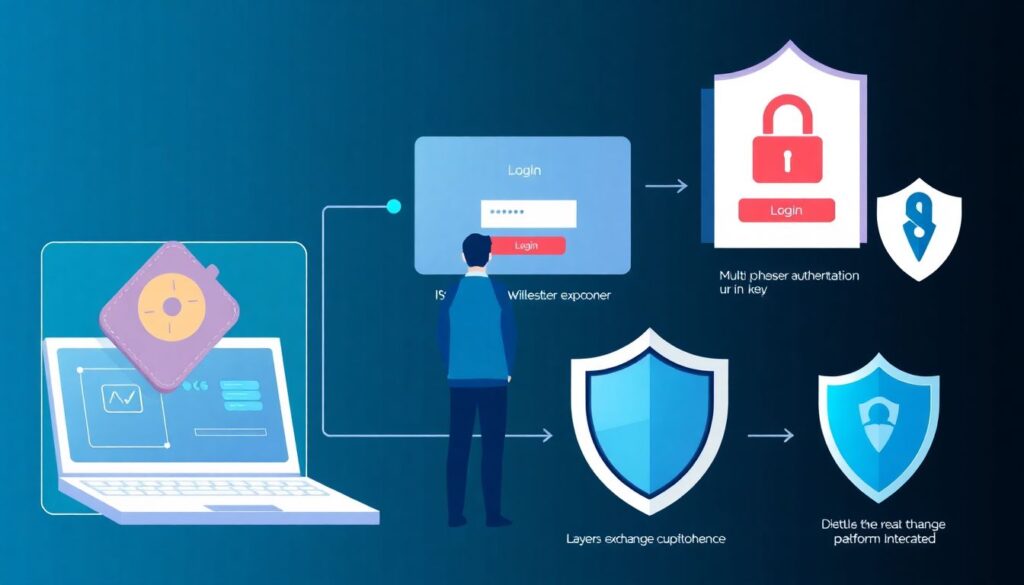Understanding Social Engineering in the Crypto Ecosystem

In 2025, as cryptocurrencies continue to solidify their role in global finance, social engineering attacks have become increasingly sophisticated. Unlike traditional hacking, social engineering exploits human psychology rather than software vulnerabilities. In the crypto space, where transactions are irreversible and anonymity is common, such attacks can be especially devastating.
Social engineering tactics in crypto typically involve phishing, impersonation, baiting, and pretexting. Attackers may pose as support agents, wallet providers, or even trusted community members to extract private keys, seed phrases, or access credentials. The decentralized and pseudonymous nature of crypto makes it difficult to trace perpetrators, increasing the importance of prevention.
Comparing Defense Approaches in the Crypto Environment
There are several strategies individuals and organizations use to guard against social engineering. These can be broadly categorized into technical, behavioral, and procedural approaches.
1. Technical Controls
Technical solutions include hardware wallets, multi-factor authentication (MFA), and biometric verification. Hardware wallets, such as Ledger or Trezor, store keys offline, making them immune to remote phishing attempts. MFA adds an additional layer of security by requiring users to confirm logins through secondary devices.
2. Behavioral Training
Security awareness training remains one of the most effective defenses. Regular simulations and educational programs help users recognize suspicious messages and understand the tactics used by scammers. In 2025, AI-driven training modules personalize threat scenarios based on user behavior, increasing engagement and retention.
3. Procedural Protocols
Organizations managing crypto assets often implement procedural safeguards, such as multi-signature wallets and transaction approval policies. These protocols ensure that a single compromised individual cannot authorize large transfers without consensus.
Pros and Cons of Each Method
Each defense mechanism has its benefits and limitations.
– Hardware Wallets
*Pros:* High security, offline storage, immune to phishing.
*Cons:* Costly, may be lost or damaged, requires user discipline.
– MFA and Biometrics
*Pros:* Adds strong identity verification, widely supported.
*Cons:* Vulnerable to SIM swapping, biometric spoofing.
– Security Training
*Pros:* Enhances user vigilance, cost-effective, scalable.
*Cons:* Human error remains a factor, training decay over time.
– Multi-sig Protocols
*Pros:* Prevents unilateral asset movement, ideal for DAOs and treasuries.
*Cons:* Slower transaction processes, requires coordination.
Recommendations for Users and Organizations

To build a robust defense against social engineering, a layered approach is essential. Below are five key recommendations:
1. Use hardware wallets for storing significant crypto holdings.
2. Enable MFA on all exchange and wallet accounts.
3. Never share seed phrases or private keys — even with ‘support staff’.
4. Participate in regular phishing simulation training.
5. Verify identities through multiple channels before acting on requests.
For organizations, implementing multi-signature wallets and establishing strict internal protocols is critical. Onboarding procedures should include security training, and regular audits can identify potential vulnerabilities.
Trends and Predictions for 2025 and Beyond
The landscape of social engineering is evolving rapidly. In 2025, attackers are leveraging deepfake technology and AI-generated chatbots to impersonate trusted figures with uncanny realism. These tools make scams more convincing and harder to detect.
At the same time, defensive technologies are advancing. Decentralized identity (DID) systems are gaining traction, allowing users to verify their credentials without exposing sensitive data. AI-driven anomaly detection tools now monitor user behavior, flagging suspicious interactions in real-time.
Another emerging trend is the integration of social trust layers into wallets and platforms. These systems use reputation scores and social graphs to evaluate the credibility of counterparties, reducing the likelihood of falling for impersonators.
Looking ahead, the intersection of AI and blockchain will redefine how trust is established online. But with advanced tools come advanced threats. The arms race between attackers and defenders is far from over.
Final Thoughts
In the crypto world, where assets are digital and trust is decentralized, defending against social engineering requires more than just strong passwords. It’s a combination of technology, education, and vigilance. As 2025 unfolds, the most successful individuals and organizations will be those who stay informed, adapt quickly, and never underestimate the creativity of a determined attacker.

